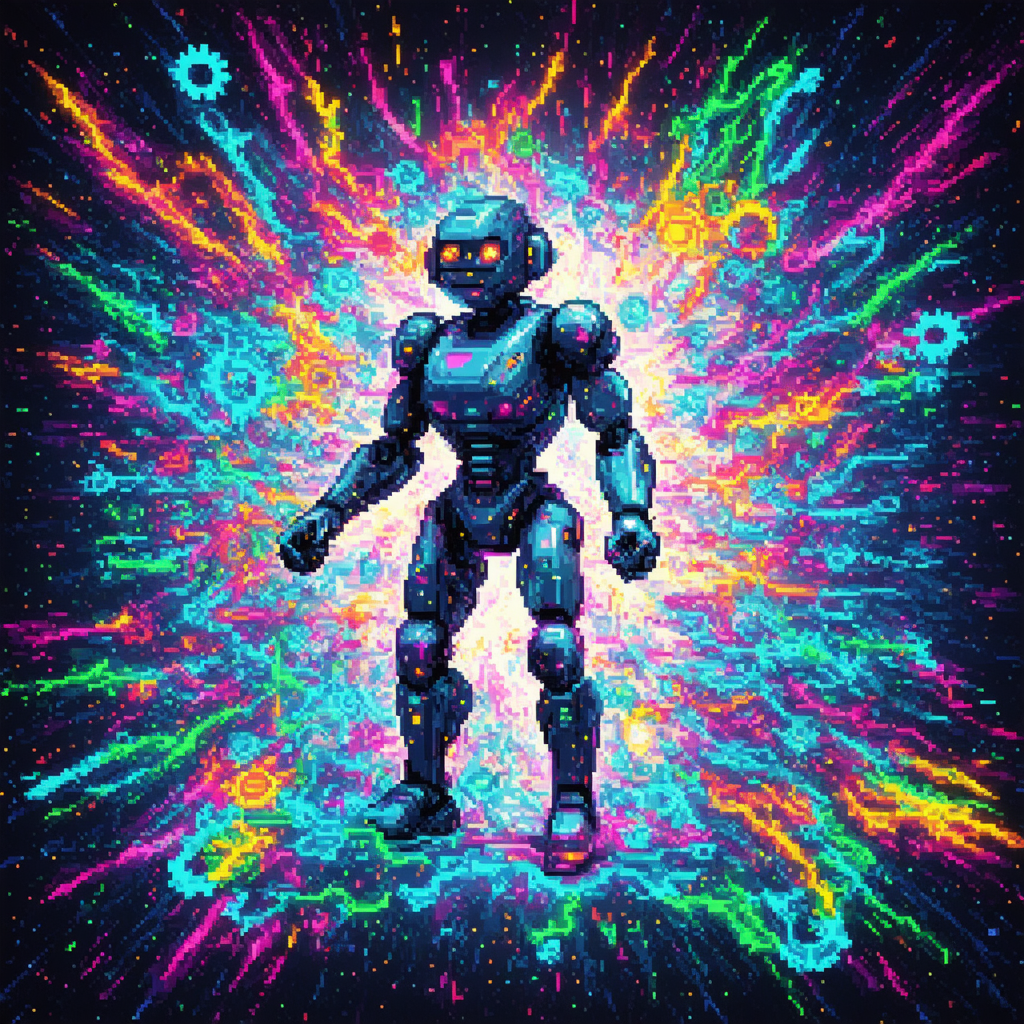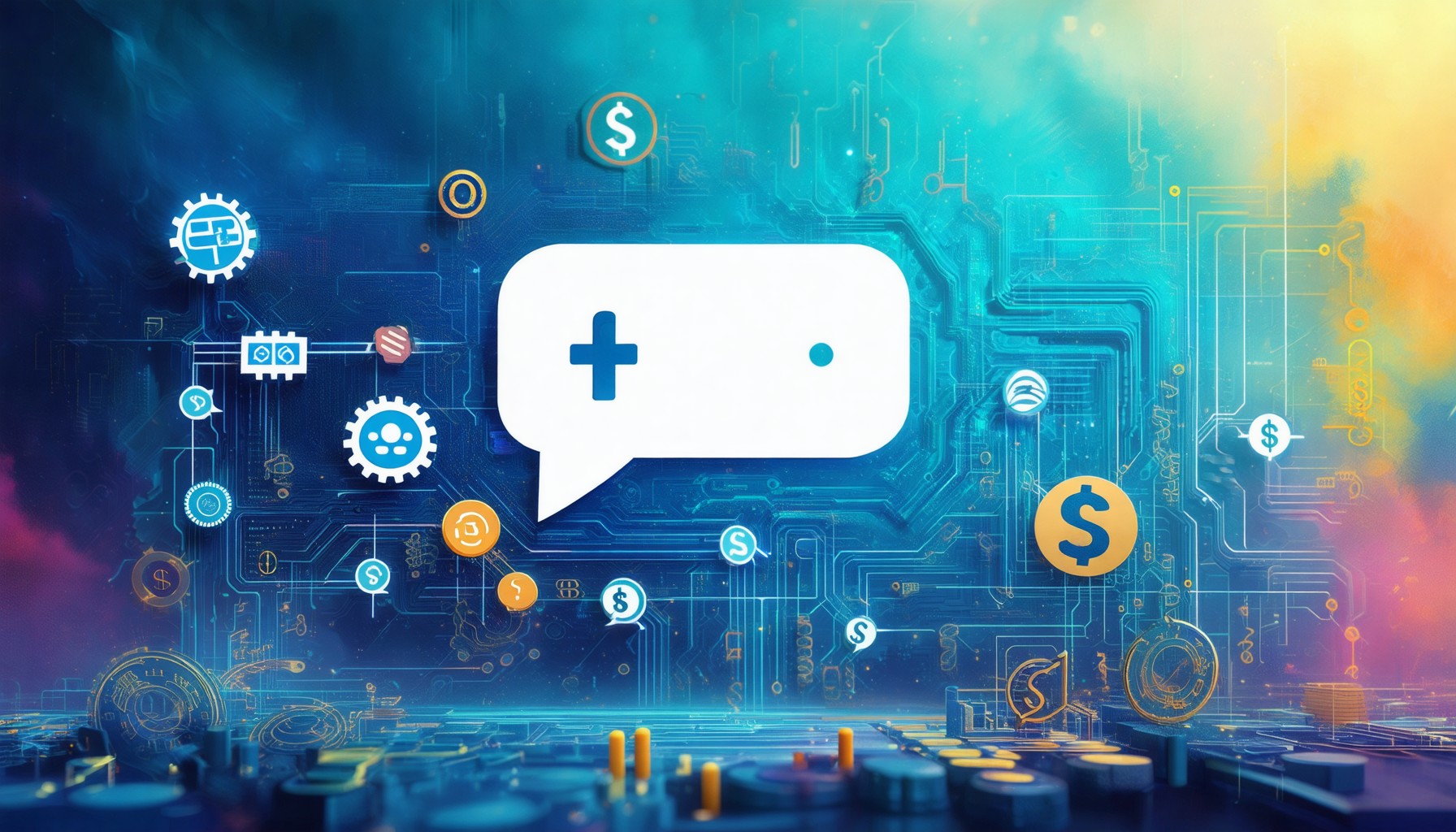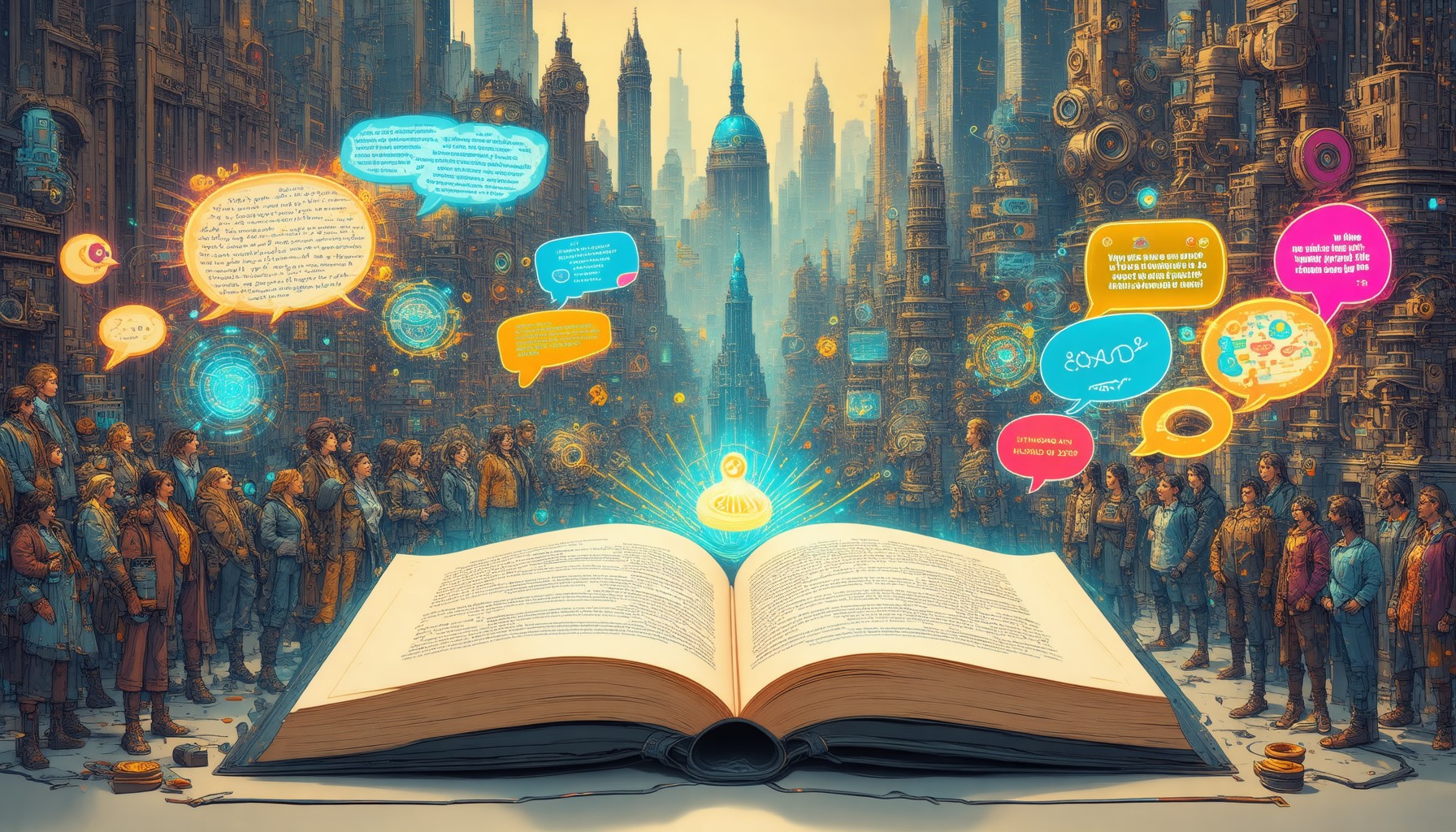In today’s fast-paced digital landscape, customer service chatbot examples have emerged as essential tools for businesses aiming to enhance their support strategies. This article will delve into 10 powerful customer service chatbot examples that not only streamline communication but also improve customer satisfaction. We will explore what constitutes an effective customer service AI chatbot, highlighting the numerous benefits these chatbots for customer service offer. Additionally, we will discuss how to build a customer service chatbot, the key features that make them successful, and provide insights into the best AI chatbot options available. Whether you’re looking for free customer service chatbot examples or seeking to understand how to implement AI in your customer support strategy, this comprehensive guide will equip you with the knowledge needed to leverage chatbots for customer support effectively. Join us as we uncover the transformative power of customer care chatbots and how they can elevate your business’s customer service experience.
What is an example of a customer service AI chatbot?
Overview of Customer Service Chatbots
Customer service chatbots are automated tools designed to assist users in real-time, enhancing the overall customer experience. These customer service chatbots utilize artificial intelligence (AI) and natural language processing (NLP) to understand and respond to customer inquiries efficiently. By integrating these chatbots into various platforms, businesses can streamline their communication processes, reduce response times, and provide 24/7 support without the need for constant human oversight.
Benefits of Using AI Chatbots for Customer Support
Implementing AI chatbots for customer service offers numerous advantages, including:
- Instant Response: Chatbots provide immediate answers to customer queries, significantly reducing wait times and enhancing user satisfaction.
- Cost Efficiency: By automating routine inquiries, businesses can lower operational costs and allocate human resources to more complex tasks.
- Data Collection: Chatbots gather valuable insights from customer interactions, which can be analyzed to improve service delivery and customer engagement strategies.
- Scalability: AI chatbots can handle multiple conversations simultaneously, making them ideal for businesses experiencing high volumes of customer inquiries.
An example of a customer service AI chatbot is the virtual assistant used by Domino’s Pizza. This chatbot is integrated into both the Domino’s website and mobile app, streamlining the meal ordering process for customers. Through natural language processing, users can engage in a conversational interface where they can easily specify their preferences, select toppings, and finalize their orders without any hassle.
In addition to Domino’s, other notable customer service chatbot examples include:
- Zendesk Chat: This AI-powered chatbot helps businesses provide real-time support and can be customized to handle various customer inquiries efficiently.
- Drift: Known for its conversational marketing capabilities, Drift assists in qualifying leads and booking meetings, enhancing customer engagement.
- Intercom: This platform offers a robust chatbot that can automate responses to common questions, allowing customer service teams to focus on more complex issues.
- LivePerson: This AI chatbot leverages machine learning to understand customer intent and provide personalized responses, improving overall customer satisfaction.
- Chatbot.com: This tool allows businesses to create custom chatbots that can handle customer queries, schedule appointments, and provide product recommendations.
These chatbots not only enhance customer experience by providing instant support but also gather valuable data that can be analyzed to improve service delivery. For more information on the effectiveness of AI chatbots in customer service, refer to studies from sources like Gartner and Forrester Research, which highlight the growing trend of AI adoption in customer interactions.

Can You Use a Chatbot for Customer Service?
Yes, you can use a chatbot for customer service, and it offers numerous advantages that enhance operational efficiency and customer satisfaction. Here are key points to consider:
- Automation of Routine Tasks: Chatbots can handle repetitive inquiries such as FAQs, order tracking, and appointment scheduling. This automation allows human agents to focus on more complex issues, improving overall service quality.
- 24/7 Availability: Unlike human agents, chatbots can provide round-the-clock support, ensuring that customers receive assistance at any time, which is crucial for global businesses.
- Scalability: Chatbots can manage multiple conversations simultaneously, making them an ideal solution for businesses experiencing high volumes of customer interactions, especially during peak times.
- Cost Efficiency: Implementing chatbots can significantly reduce operational costs by minimizing the need for a large customer service team. According to a report by Juniper Research, chatbots are expected to save businesses over $8 billion annually by 2022.
- Enhanced Customer Experience: Chatbots can provide instant responses, personalized interactions, and consistent service, which can lead to higher customer satisfaction and loyalty.
- Data Collection and Insights: Chatbots can gather valuable data on customer preferences and behavior, allowing businesses to tailor their services and improve marketing strategies.
- Integration with Other Systems: Modern chatbots can be integrated with CRM systems, enabling seamless access to customer data and history, which enhances the quality of interactions.
In conclusion, utilizing chatbots for customer service not only streamlines operations but also enhances customer engagement and satisfaction. As technology continues to evolve, the capabilities of chatbots will expand, making them an indispensable tool for businesses aiming to improve their customer service strategies.
How Chatbots Enhance Customer Care
Chatbots play a pivotal role in enhancing customer care by providing immediate assistance and support. They can effectively manage inquiries, ensuring that customers receive timely responses. This capability is particularly beneficial for businesses that operate across different time zones, as chatbots can provide support outside of regular business hours. Furthermore, chatbots can be programmed to handle a variety of customer service scenarios, from simple queries to more complex issues, thereby improving the overall customer experience.
Additionally, the integration of AI chatbots for customer service allows for personalized interactions. By analyzing customer data, chatbots can tailor responses based on individual preferences and past interactions, leading to a more engaging and satisfying customer journey. This level of personalization is crucial for building customer loyalty and trust.
Key Features of Effective Customer Service Chatbots
Effective customer service chatbots possess several key features that enhance their functionality and user experience:
- Natural Language Processing (NLP): This allows chatbots to understand and respond to customer inquiries in a conversational manner, making interactions feel more human-like.
- Multi-Channel Support: Chatbots can operate across various platforms, including websites, social media, and messaging apps, ensuring a consistent customer experience.
- Analytics and Reporting: Advanced chatbots provide insights into customer interactions, helping businesses identify trends and areas for improvement.
- Integration Capabilities: The ability to integrate with existing systems, such as CRM and e-commerce platforms, enhances the chatbot’s effectiveness in providing relevant information and support.
- Customizable Workflows: Businesses can tailor chatbot workflows to meet specific needs, ensuring that the bot aligns with their customer service strategy.
By leveraging these features, businesses can implement customer service chatbots that not only meet but exceed customer expectations, ultimately leading to improved satisfaction and loyalty.
What is the Best AI Chatbot for Customer Support?
When it comes to enhancing customer service, selecting the right customer service chatbot examples can significantly impact your business’s efficiency and customer satisfaction. Various AI chatbots are designed to streamline customer interactions, providing quick responses and personalized support. Below are some of the best customer service chatbots available today:
Best Customer Service Chatbot Examples
- Zobot by Zoho SalesIQ: This AI chatbot offers advanced automation features, enabling businesses to provide personalized customer support. It integrates seamlessly with various platforms and utilizes machine learning to enhance user interactions. [Source: Zoho]
- Ultimate by Zendesk: Known for its robust analytics and reporting capabilities, Ultimate by Zendesk helps businesses track customer interactions and improve service quality. Its AI-driven responses adapt based on customer behavior. [Source: Zendesk]
- Ada: Ada specializes in automating customer interactions through a user-friendly interface. It allows for easy customization and is particularly effective in handling high volumes of inquiries. [Source: Ada]
- Lyro by Tidio: Lyro combines live chat and chatbot functionalities, providing a hybrid approach to customer support. Its AI capabilities help in resolving queries quickly while maintaining a human touch. [Source: Tidio]
- CoSupport AI: This platform focuses on enhancing customer engagement through intelligent automation. CoSupport AI uses natural language processing to understand and respond to customer needs effectively. [Source: CoSupport]
- Netomi: Netomi is designed to handle complex customer queries with its deep learning algorithms. It integrates with existing customer service tools, providing a seamless experience for both agents and customers. [Source: Netomi]
- Drift by Salesloft: Drift stands out for its focus on conversational marketing, allowing businesses to engage customers in real-time. Its AI chatbot can qualify leads and schedule meetings, enhancing the sales process. [Source: Drift]
- Freddy AI by Freshworks: Freddy AI leverages AI to provide contextual support, learning from past interactions to improve future responses. It integrates with Freshworks’ suite of products for a comprehensive customer support solution. [Source: Freshworks]
- Intercom: Intercom’s chatbot offers personalized messaging and proactive customer engagement. It uses AI to segment users and tailor responses based on their behavior and preferences. [Source: Intercom]
- LivePerson: LivePerson focuses on AI-driven messaging solutions that allow businesses to communicate with customers across multiple channels. Its chatbot can handle inquiries while escalating complex issues to human agents when necessary. [Source: LivePerson]
Comparing AI Chatbots for Customer Support
When evaluating chatbot examples for customer service, consider the following key features that can enhance your customer support experience:
- Automation Capabilities: Look for chatbots that offer automated responses to common inquiries, reducing the workload on human agents.
- Integration Options: Ensure the chatbot can integrate with your existing customer service platforms for a seamless experience.
- Analytics and Reporting: Choose chatbots that provide insights into customer interactions, helping you refine your support strategies.
- Customization: The ability to tailor the chatbot’s responses and workflows to fit your brand’s voice is crucial for maintaining a consistent customer experience.
- Multilingual Support: If your business serves a global audience, consider chatbots that can communicate in multiple languages, enhancing accessibility.
For further insights on how to implement these customer service chatbots effectively, explore our detailed guide on elevating customer support with conversational AI chatbots.
How to Build a Customer Service Chatbot?
Building a customer service chatbot involves several strategic steps to ensure it effectively meets customer needs and enhances overall service quality. Here’s a comprehensive guide to help you create a successful customer service chatbot.
Steps to Create a Customer Service Chatbot
- Identify Key Objectives: Begin by defining the primary goals of your customer service chatbot. Consider what you want to achieve, such as reducing response times, improving customer satisfaction, or handling specific queries.
- Analyze Customer Interactions: Utilize analytics tools to assess customer interactions across various channels. Identify the top 10 most common inquiries or issues that customers face. This data will guide the chatbot’s programming and ensure it addresses the most pressing needs.
- Choose the Right Platform: Select a chatbot development platform that aligns with your technical capabilities and business requirements. Popular options include Brain Pod AI, Dialogflow, Microsoft Bot Framework, and Chatfuel. Each platform offers unique features, so choose one that best fits your needs.
- Design Conversational Flows: Create intuitive conversational flows that guide users through interactions. Use decision trees to map out potential user queries and responses. Ensure the chatbot can handle variations in phrasing and context to enhance user experience.
- Incorporate Natural Language Processing (NLP): Implement NLP capabilities to enable the chatbot to understand and process human language more effectively. This technology allows the bot to interpret user intent and respond accurately, improving overall engagement.
- Integrate with Existing Systems: Ensure your chatbot can seamlessly integrate with existing customer service systems, such as CRM software and helpdesk tools. This integration allows for a more cohesive experience and enables the bot to access customer data for personalized responses.
- Test and Optimize: Conduct thorough testing of the chatbot before deployment. Gather feedback from users and continuously monitor interactions to identify areas for improvement. Regularly update the chatbot’s knowledge base to keep it relevant and effective.
- Measure Success: Establish key performance indicators (KPIs) to evaluate the chatbot’s effectiveness. Metrics such as response time, resolution rate, and customer satisfaction scores will help you assess its impact and make necessary adjustments.
- Stay Updated on Trends: Keep abreast of the latest trends in chatbot technology and customer service. For instance, incorporating AI advancements can enhance the chatbot’s capabilities, making it more efficient and user-friendly.
- Cite Authoritative Sources: For further reading and best practices, refer to resources such as the following:
- The Future of Customer Service: Chatbots and AI by McKinsey & Company
- Building Chatbots with Python by Sumit Raj (Packt Publishing)
- Chatbots: The Definitive Guide by Drift
Tools and Platforms for Building Chatbots
When it comes to building effective customer service chatbots, selecting the right tools and platforms is crucial. Here are some popular options:
- Brain Pod AI: Known for its advanced AI capabilities, Brain Pod AI offers a versatile platform for creating chatbots that can handle complex customer interactions.
- Dialogflow: A Google product that provides robust NLP features, making it ideal for businesses looking to implement sophisticated conversational interfaces.
- Microsoft Bot Framework: This framework allows developers to create, test, and deploy chatbots across multiple channels, ensuring a wide reach and integration capabilities.
- Chatfuel: A user-friendly platform that enables businesses to build chatbots without coding, perfect for those new to chatbot development.
By leveraging these tools and following the outlined steps, you can create a customer service chatbot that not only meets customer expectations but also enhances your overall service strategy. For more insights on customer service chatbot examples, explore our resources.

How to Use AI in Customer Service?
Integrating AI into customer service strategies can significantly enhance the overall customer experience. By leveraging advanced technologies, businesses can streamline operations, improve response times, and provide personalized support. Here are some effective ways to implement AI in customer service:
Implementing AI in Customer Support Strategies
AI-powered chatbots are revolutionizing the way businesses interact with customers. By providing instant responses to inquiries, these customer service chatbot examples can operate 24/7, ensuring that customers receive assistance whenever they need it. For instance, implementing AI chatbots can save businesses up to $8 billion annually by improving efficiency and reducing operational costs, as highlighted by Juniper Research.
Additionally, predictive analytics can be utilized to anticipate customer needs and behaviors. By analyzing past interactions, businesses can proactively address potential issues, enhancing customer satisfaction. Research from McKinsey indicates that predictive analytics can improve customer retention by up to 15%, making it a valuable tool for customer care chatbots.
Generative AI Chatbot Examples in Action
Generative AI chatbots are designed to create personalized customer experiences by analyzing user data and preferences. These chatbots for customer service can provide tailored recommendations and targeted promotions, significantly increasing the likelihood of purchase. According to Epsilon, 80% of consumers are more inclined to buy when brands offer personalized experiences.
Moreover, AI-driven sentiment analysis can be employed to gauge customer feedback across various platforms. This technology helps identify trends and areas for improvement, allowing businesses to adapt their strategies effectively. A study by IBM found that companies utilizing sentiment analysis can enhance customer engagement by 20%, showcasing the power of AI in transforming customer interactions.
What are some questions to ask a chatbot?
When interacting with customer service chatbots, users often have specific inquiries that can enhance their experience. Here are some common questions that can be directed to a chatbot for customer service:
- Are you human or a robot?
- What is your name and purpose?
- How do you learn and improve over time?
- What types of questions can you answer?
- Can you provide examples of tasks you can assist with?
- How do you handle sensitive or personal information?
- What is your response time for queries?
- Can you communicate in multiple languages? If so, which ones?
- How do you ensure the accuracy of your responses?
- What are your limitations as a chatbot?
- How do you handle misunderstandings or incorrect queries?
- Can you integrate with other applications or services?
- What is your favorite topic to discuss?
- How do you maintain user privacy and data security?
- Who developed you and what technology do you use?
Common Questions for Customer Service Chatbots
These questions not only help users understand the capabilities of customer support chatbots but also set clear expectations for the interaction. For instance, asking “What is your name and purpose?” can clarify the chatbot’s role in assisting with customer inquiries. Additionally, questions about language capabilities, such as “Can you communicate in multiple languages?” highlight the multilingual support that many modern chatbots offer, making them accessible to a broader audience.
Chatbot Examples for Students and Learning
In educational settings, chatbots for customer service can be particularly beneficial. For example, a chatbot customer service example in a university might assist students with enrollment questions, course information, or campus resources. This not only streamlines communication but also enhances the learning experience by providing immediate support. Brain Pod AI offers innovative solutions that can be tailored for educational institutions, showcasing how AI chatbots for customer service can transform student engagement.
Free customer service chatbot examples
In today’s digital landscape, businesses are increasingly turning to customer service chatbots to enhance their support systems. These chatbots for customer service not only streamline interactions but also provide cost-effective solutions for engaging with customers. Below, we explore some notable free customer service chatbot examples that can help businesses improve their customer care.
Exploring Free Chatbot Options for Businesses
There are several customer service chatbot examples available that offer free versions, allowing businesses to test their capabilities without a financial commitment. One prominent example is Messenger Bot, which provides a robust platform for automating responses across various channels, including social media and websites. This tool is designed to enhance user engagement through features like automated responses and workflow automation.
Another noteworthy option is Brain Pod AI, which offers a range of AI-driven solutions, including a multilingual AI chat assistant. This feature allows businesses to cater to a diverse audience, making it an excellent choice for companies looking to expand their reach. The free demo available on their site provides a hands-on experience of their capabilities.
Best Chatbot Examples for Customer Support
When considering the best customer service chat bots, it’s essential to look at their functionalities and how they can meet specific business needs. For instance, AI chatbots for customer service like Zendesk Chat offer comprehensive support features, including live chat integration and analytics tools, which can significantly enhance customer interactions.
Additionally, chatbot examples such as Intercom provide advanced capabilities for lead generation and customer engagement, making them ideal for businesses aiming to improve their customer support strategies. These platforms often come with free trials, allowing businesses to evaluate their effectiveness before committing to a paid plan.
In summary, leveraging customer service chatbot examples can greatly enhance your business’s customer support capabilities. By exploring free options like Messenger Bot and Brain Pod AI, businesses can find the right fit for their needs while optimizing customer interactions.




